How villages keep the spirit of Bengali weddings alive
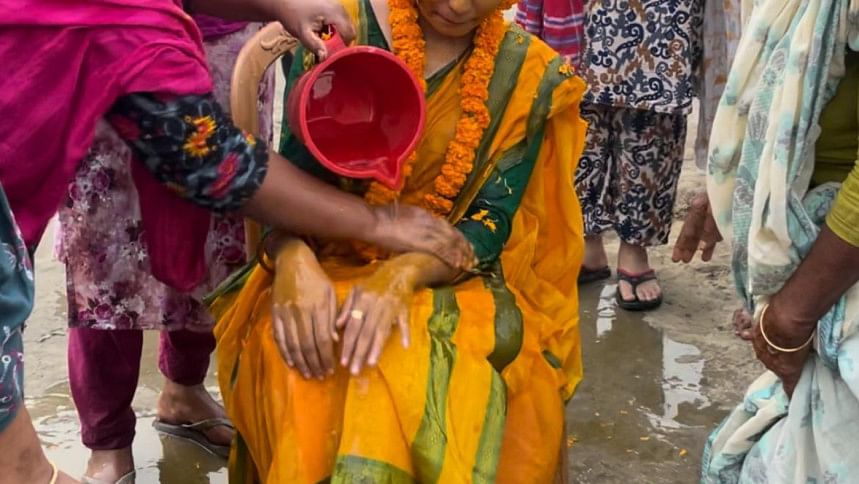
A house, a big yard, huge pots of rice pudding, packets of colour, and pure wild turmeric paste scattered around, garlands of marigold, fairy lights, and colourful silk adorned across the yard and entrance, and lots of love, laughter, and joy.
That's exactly how a rural wedding ceremony begins. One might think Bengali holud ceremonies are based on glamorous venues decorated with roses and ivory, aesthetically themed photo booths, dance performances on Bollywood songs from dusk till midnight during winter, and flashy, gorgeously dressed guests.
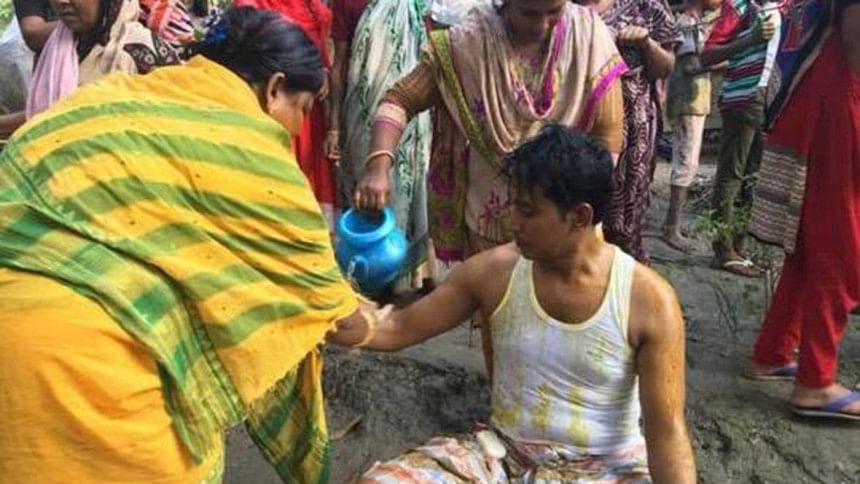
However, the authentic holud ceremony in the rural areas of Bangladesh is a completely different splash of colours. Instead of glamorous convention halls, these ceremonies are celebrated at home. All of this happens during summer, which is considered auspicious, instead of winter, when weddings in the city usually take place.
It starts with the women of the house waking up before dawn to make 'kheer' or rice pudding, using the biggest pot to distribute around the neighbourhood, expecting blessings for the soon-to-be-wed in return. Meanwhile, the youngsters and maidens engage themselves in collecting wild turmeric, 'Abir' or coloured powder, rice grains, 'Durba ghash' or scutch grass, and marigold. The men take care of the logistics of the upcoming wedding. Once the kheer has been distributed, turmeric has been turned into a fine paste, multiple colours have been unpacked, and the yard has been decorated in the simplest way possible, everyone waits for the main ceremony to unfold.
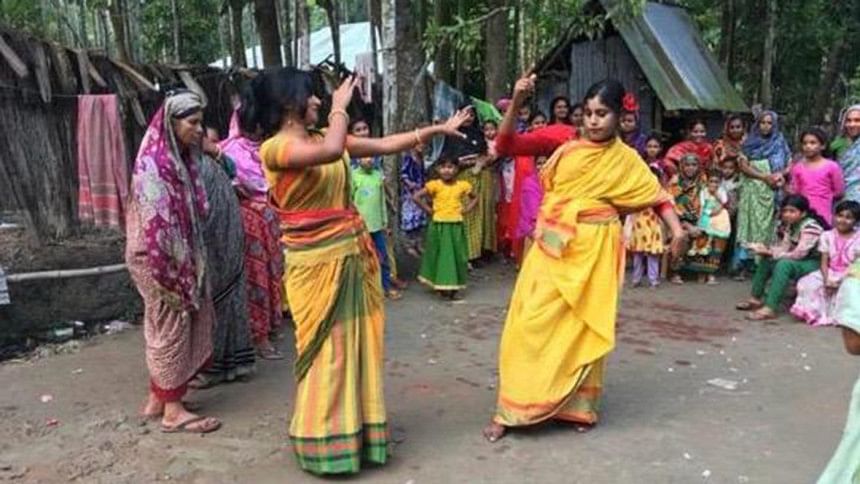
The bride, the centre of attention, appears looking her best in a bright yellow saree, 'gamcha' or traditional towel in her hand, jewellery made of fresh flowers, glowing in anticipation and happiness. She sits down on a clay stool, or what they call a 'piri', and the games begin! Her face is full of turmeric smudged by everyone, her laughter echoing that of the ones around her. The house soon turns into an absolute mess of giggles, turmeric and colours, with everyone chasing each other to attack them with the remaining paste and powdered colours. As the chasing goes on, elders bathe the bride in milk and water purified with mango leaves, and bless her with rice grains and 'durba', singing folk songs from ancient Bengal. Once the bride has been bathed in beauty and purity, the yard is muddy — this is the cue for the youngsters to drop everyone in the mud.
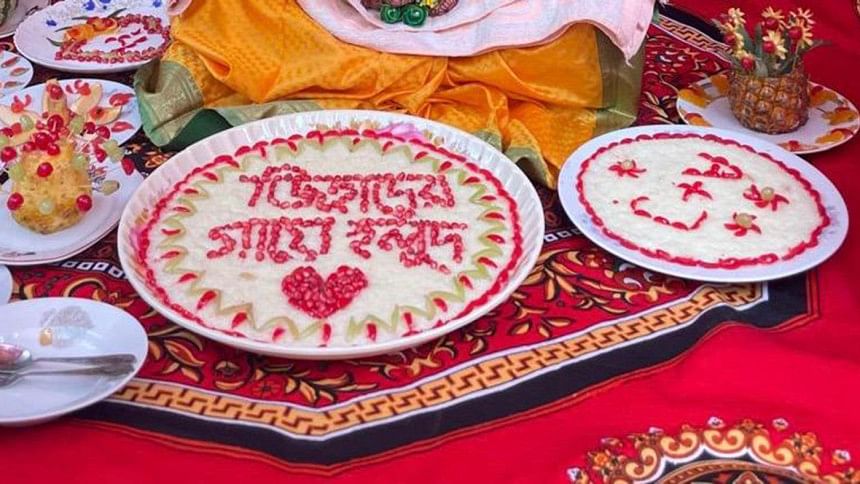
This is not a ritual only for the brides—the grooms in rural areas also follow this custom before getting married. The only difference is that the son of the house dresses up in a new 'lungi' and 'panjabi', with a new 'gamcha' draped around his shoulder. Rural holud ceremonies include various games and plays like these, which vary from region to region. Some play in the mud, or what is known as 'kada khela', some act in a fun play predicting the bride or groom's future, while others take part in more challenging games, such as locking the soon-to-be-wed in a room! These are usually arranged to momentarily ease the melancholy of the child of the house taking a huge step in life. The day is spent with laughter, tears, adrenaline, and lots of splashes of colour in the form of joy.

As soon as the sun sets beyond the horizon, the bride changes into another yellow saree, and the groom changes into another set of 'kurta pajama'. They sit down for the next ritual to begin. 'Kheer khawano' is a custom celebrated to bless and honour their married life ahead. Elders feed the engaged couple something sweet and give them little presents like money or gold, symbolising a sweet and prosperous life to come. Meanwhile, the maidens and youngsters sing folk songs and dance around, making the environment even more delightful. The night ends with the bride and groom sugar-rushed and happy, everyone else preparing for the next day to unfold, buzzing with hopefulness.
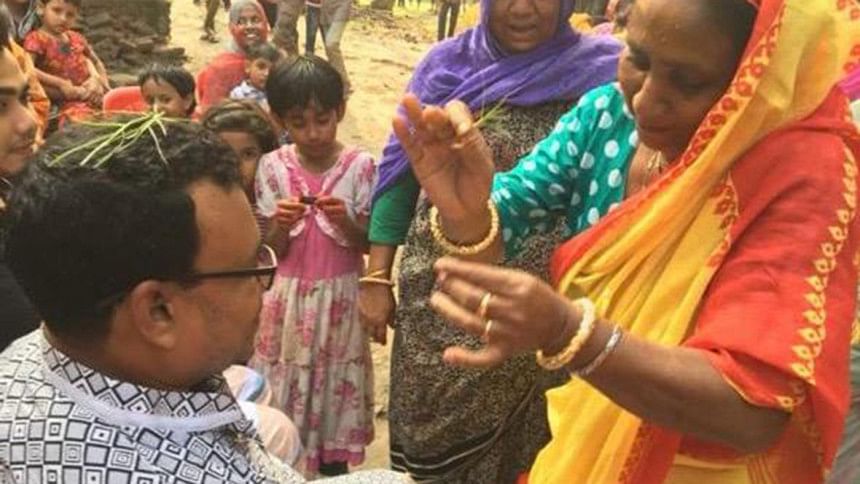
Spectating this occasion is an experience one must have. It fills the heart with love and bags of memories to take home. It does not require all the glam and sparkles for the house to beam with merriness, or for the wedding to be celebrated with equal purity and grace. It does not matter if the summer heat is scorching or the gloom of the bride's departure hangs in the air — the joy, the purity, the absolute scatter of colours, and the glee are all the same. These holud ceremonies celebrate the future of the husband- or wife-to-be, and the core of Bengali culture and nearly extinct rituals in one joyful occasion.

 For all latest news, follow The Daily Star's Google News channel.
For all latest news, follow The Daily Star's Google News channel. 








Comments